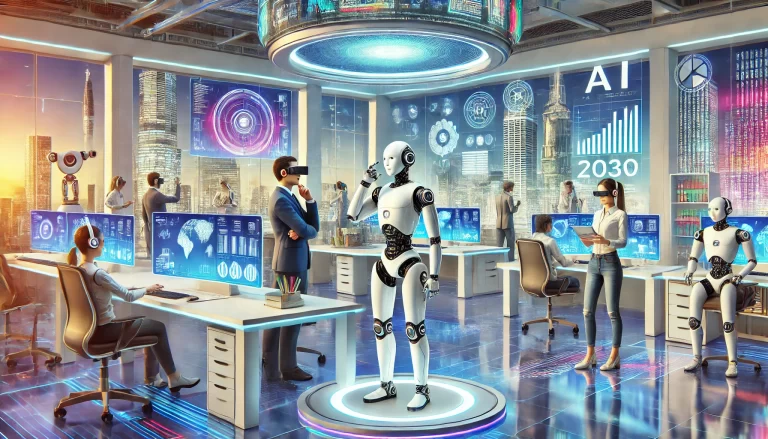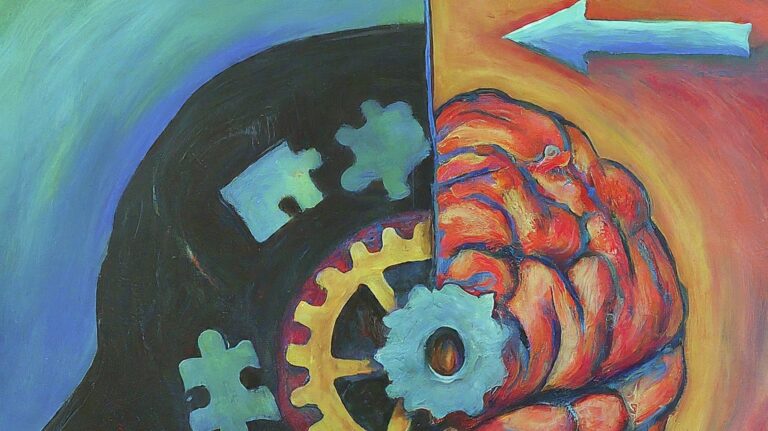In recent years, augmented reality (AR) and virtual reality (VR) have moved from the realm of science fiction into practical, everyday applications. These technologies are not only transforming entertainment and gaming but also revolutionizing various sectors, including education, healthcare, real estate, and beyond. This article explores the profound impact of AR and VR on our lives, delving into their potential benefits and the challenges they present.
Understanding AR and VR
Augmented Reality (AR) overlays digital information onto the real world. Users can see and interact with virtual elements as part of their physical environment using devices like smartphones, tablets, and AR glasses. Popular applications include the mobile game Pokémon GO and various educational apps that enhance learning experiences.
Virtual Reality (VR), on the other hand, immerses users in a fully virtual environment, shutting out the physical world. Using VR headsets like the Oculus Rift or HTC Vive, users can explore and interact with 3D worlds that can simulate real or imagined environments. VR is widely used in gaming, virtual tours, and training simulations.
Transforming Entertainment and Gaming
The entertainment and gaming industries were among the first to embrace AR and VR technologies. VR gaming provides immersive experiences that transport players into the heart of virtual worlds, offering unprecedented levels of engagement and realism. Games like Beat Saber and Half-Life: Alyx demonstrate the potential for VR to revolutionize how we play and interact with digital environments.
- Enhanced User Engagement: VR games offer a level of immersion that traditional games cannot match, making players feel like they are part of the game world.
- Innovative Gameplay Mechanics: AR games like Pokémon GO use real-world environments as part of the game, encouraging physical activity and exploration.
AR is also enhancing the gaming experience. Pokémon GO, launched in 2016, was a breakthrough in AR gaming, blending the virtual and real worlds in a captivating way. This game not only entertained millions but also encouraged physical activity and social interaction, highlighting the broader potential of AR to impact lifestyle and behavior.
Revolutionizing Education and Training
AR and VR are transforming education by providing immersive and interactive learning experiences. AR applications can bring textbooks to life by overlaying 3D models, videos, and interactive content onto traditional learning materials. This can make complex subjects like anatomy, astronomy, and engineering more accessible and engaging for students.
- Enhanced Learning Tools: AR can turn static images into interactive experiences, making learning more engaging.
- Virtual Field Trips: VR can transport students to historical sites, outer space, or inside the human body, providing experiences that are impossible in a traditional classroom.
VR takes experiential learning to new heights. Medical students can practice surgeries in a risk-free virtual environment, gaining valuable hands-on experience without the need for a physical cadaver. Similarly, VR simulations are used in pilot training, allowing trainees to experience and react to various flight scenarios without leaving the ground. This approach not only enhances learning outcomes but also reduces training costs and improves safety.
Enhancing Healthcare
The healthcare sector is experiencing significant benefits from AR and VR technologies. AR can assist surgeons during operations by overlaying critical information, such as patient vitals and 3D models of anatomy, onto the surgeon’s field of view. This real-time data can improve precision and outcomes in complex procedures.
- Improved Surgical Precision: AR can provide surgeons with real-time, 3D guidance during procedures.
- Mental Health Treatment: VR therapy can help treat PTSD, anxiety, and phobias by gradually exposing patients to triggering environments in a controlled manner.
VR is also making waves in mental health treatment. VR therapy can help treat conditions like PTSD, anxiety, and phobias by gradually exposing patients to triggering environments in a controlled and safe manner. Additionally, VR is being used for pain management, providing distraction and relaxation techniques to help patients cope with chronic pain or undergo medical procedures with less discomfort.
Redefining Real Estate and Architecture
AR and VR are revolutionizing the real estate and architecture industries by offering new ways to visualize and interact with properties. Prospective buyers can use AR to take virtual tours of homes, seeing how furniture and decor would look in different spaces before making a purchase. This technology can enhance the home-buying experience and help buyers make more informed decisions.
- Virtual Property Tours: VR can give potential buyers a realistic tour of a property from anywhere in the world.
- Enhanced Visualization: AR can help clients visualize changes in real-time, improving communication between architects and clients.
Architects and designers use VR to create and explore 3D models of buildings and interiors, allowing clients to walk through and experience a space before it is built. This can streamline the design process, reduce errors, and improve client satisfaction by providing a clear vision of the final product.
The Future of Work and Collaboration
AR and VR are set to transform the workplace by enabling more effective remote collaboration and training. Virtual meetings can go beyond video calls, allowing participants to interact in a shared virtual space as if they were in the same room. This can enhance communication, foster teamwork, and reduce the need for travel.
- Remote Collaboration: VR can create virtual meeting rooms where team members from around the world can collaborate in real-time.
- Enhanced Training Programs: AR can provide on-the-job training with real-time guidance and information overlay.
In industrial settings, AR can provide workers with real-time guidance and information, improving efficiency and reducing errors. For example, technicians can use AR glasses to see step-by-step instructions overlaid on machinery, facilitating maintenance and repairs.
Challenges and Considerations
Despite the promising potential of AR and VR, several challenges must be addressed to fully realize their benefits. These include technical limitations, such as the need for more powerful hardware and improved software integration. There are also concerns about privacy and data security, as AR and VR devices often collect and process sensitive information.
- Technical Barriers: Current hardware limitations and high costs can hinder widespread adoption.
- Privacy Concerns: The collection of personal data through AR and VR devices raises significant privacy and security issues.
Additionally, there are ethical considerations regarding the impact of these technologies on mental and physical health. Prolonged use of VR can cause motion sickness and eye strain, while excessive dependence on virtual experiences might affect social interactions and reality perception.
Conclusion
Augmented reality and virtual reality are transformative technologies with the potential to profoundly impact various aspects of our lives. From enhancing entertainment and education to revolutionizing healthcare and the workplace, AR and VR offer exciting opportunities to create more immersive, interactive, and efficient experiences. However, it is crucial to address the technical, ethical, and health-related challenges associated with these technologies to ensure their responsible and beneficial integration into society. As AR and VR continue to evolve, they promise to reshape our world in ways we are only beginning to imagine.












